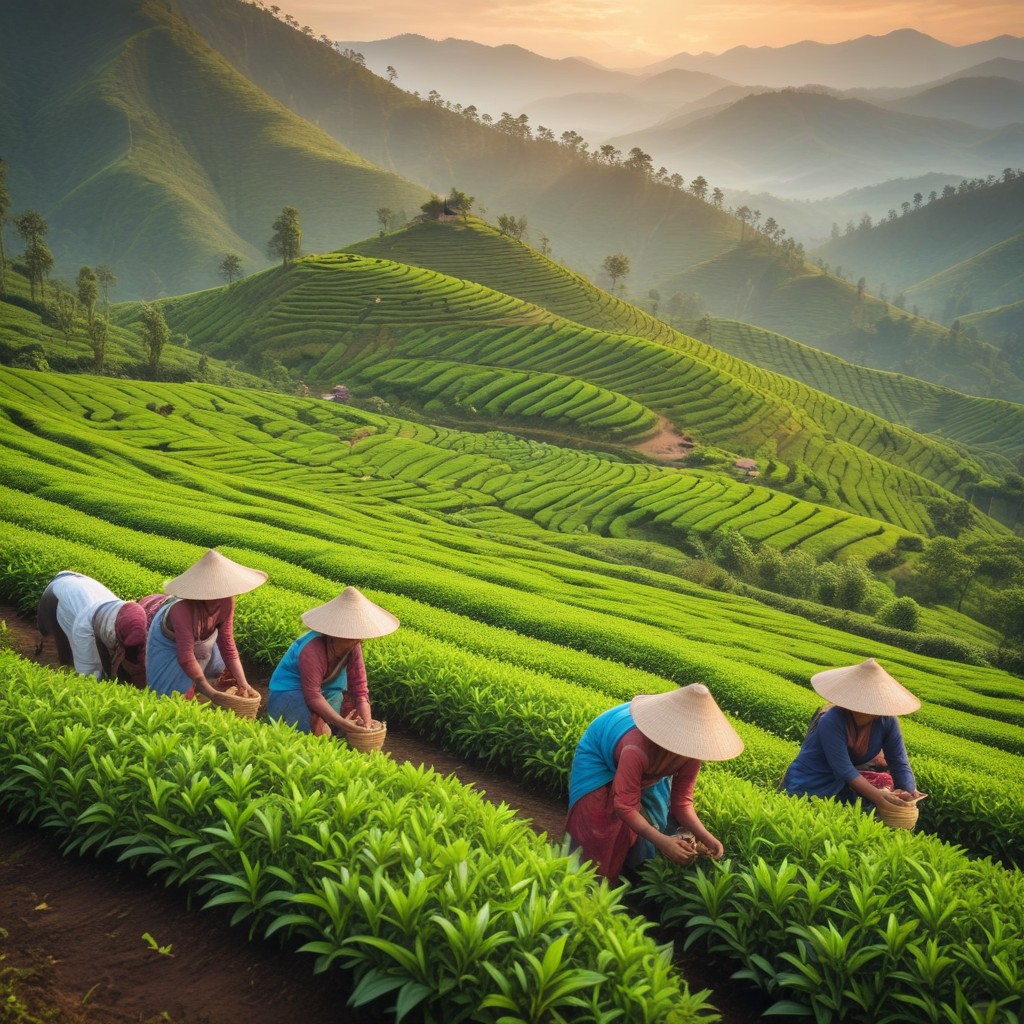FREE delivery & 40% Discount for next 3 orders! Place your 1st order in.
Our website is currently undergoing a test run.
Soon stocks will run out
Dont miss this opportunity while supplies last.
available only:
1Soon stocks will run out
Dont miss this opportunity while supplies last.
Unveiling the Elixir of Tranquility: The Fascinating World of Tea Leaves
Tea, the beloved beverage that has captivated hearts and minds for centuries, owes its enchanting aroma and nuanced flavors to the delicate leaves of the Camellia sinensis plant. From the misty mountains of China to the lush plantations of India and beyond, tea leaves have been cherished for their calming properties, invigorating flavors, and rich cultural significance.
Botanical Origins:
Tea leaves are harvested from the Camellia sinensis plant, a species native to East Asia. This evergreen shrub or small tree thrives in subtropical and tropical climates, with variations in cultivars producing different types of tea leaves. The two primary varieties of the Camellia sinensis plant are Camellia sinensis sinensis, which is native to China, and Camellia sinensis assamica, which is native to the Indian subcontinent.
Varieties and Processing:
Tea leaves undergo various processing methods to produce the wide array of tea types enjoyed around the world. The most common types of tea include:
- White Tea: Made from young, minimally processed tea leaves and buds, white tea offers delicate flavors and subtle sweetness.
- Green Tea: With minimal oxidation during processing, green tea retains its vibrant green color and fresh, grassy flavors.
- Oolong Tea: Partially oxidized tea leaves result in oolong tea, which offers a balanced flavor profile between green and black teas, with floral and fruity notes.
- Black Tea: Fully oxidized tea leaves produce black tea, known for its robust flavor, bold aroma, and dark liquor.
- Pu-erh Tea: Aged and fermented tea leaves create pu-erh tea, prized for its earthy flavor, smooth texture, and potential health benefits.
Each type of tea leaf undergoes unique processing techniques, including withering, rolling, oxidizing, and drying, to unlock its distinctive flavors and aromas.
Cultural Significance:
Tea holds deep cultural significance in many societies, serving as a symbol of hospitality, tradition, and social connection. From the elegant tea ceremonies of Japan to the bustling chai stalls of India, tea leaves bring people together, fostering moments of warmth and camaraderie.
In some cultures, tea leaves are also revered for their medicinal properties, believed to promote relaxation, aid digestion, boost immunity, and provide a sense of well-being. As such, tea has been integrated into various healing traditions, herbal remedies, and wellness practices for centuries.
Global Appeal:
Today, tea leaves are enjoyed by millions of people worldwide, transcending borders and cultures to unite tea lovers from all walks of life. Whether sipped as a morning ritual, shared with friends over conversation, or savored as a moment of solitude, tea leaves continue to offer solace, inspiration, and joy to those who partake in their timeless allure.
Conclusion:
Tea leaves are more than just a beverage; they are a gateway to tranquility, a celebration of nature’s bounty, and a reflection of human ingenuity. With their diverse flavors, rich cultural heritage, and universal appeal, tea leaves invite us on a journey of exploration and discovery, inviting us to pause, sip, and savor the simple pleasures of life.






